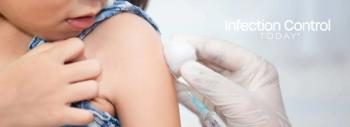
Best Practices
"Isolation: the separation of a seriously ill patient to stop the spread of infection, or protect the patient from irritating factors."
For quite some time, this definition of isolation was the mainstay on which hospital isolation protocols were established. However, in recent years, the term isolation has evolved to characterize a process designed to manage the healthcare environment. Modern isolation techniques incorporate a broad-based theory that addresses the needs of both patients and employees to ensure that the safest possible environment is maintained throughout the healthcare facility. The term isolation has changed from meaning a special set of precautions performed by a few healthcare providers for a select few patients, to a safety system that is practiced by virtually everyone in the course of routine patient care.
1. To explain the theory of standard precautions.
2. To list types of transmission-based precautions.
3. To discuss basic changes that have occurred in the theory of isolation.
TEST QUESTIONS
True or False:
1. Standard precautions require that masks be worn at all times.
2. Early isolation theory concentrated on those patients who were diagnosed with or strongly suspected of having an infectious process.
3. Transmission-based precautions are designed to be used in conjunction with standard precautions.
4. Standard precautions need only be implemented when blood is visible.
5. Contact precautions guidelines include the use of gloves when coming into contact with a patient's unbroken skin.
6. Employees with no formal education in microbiology should receive training in methods of bacterial transmission.
7. Standard precautions should be followed with all patients.
8. Airborne bacteria may stay suspended in the air for an extended period of time.
9. Droplet precautions require the use of a respirator.
10. Since airborne bacteria can be dispersed by air currents, patients in airborne precautions should be placed in rooms that have specialized air handling systems.
For more tests, or to take this one online, go to
Answers below.
These changes have evolved in stages over the past few years. Early isolation standards required that patients be placed under isolation protocols when an infectious process was diagnosed or strongly suspected. Patients were assigned isolation protocols based on a system that categorized them according to the type of disease and its primary method of transmission. These seven basic categories--wound and skin, respiratory, enteric, drainage, blood precautions, strict and protective isolation--were used to provide a means to identify and categorize isolation types. As infection control knowledge increased, emphasis was placed on a different protection strategy that looked upon all blood and body fluids from all patients as potentially infectious, regardless of the patient's diagnosis. This concept of universal precautions forced healthcare professionals to change the way that they thought about infection and the way that they interacted with all patients. Over the years, efforts were made to streamline the existing system and create a system that would be easy to understand and easy to use. It is from this background that the current guidelines evolved.
Standard Precautions
Current guidelines use a two-tiered strategy to create this safety system. The first, and most commonly used tier, is standard precautions. Standard precautions theory recognizes the need to reduce the risk of bacterial transmission from both identified and unidentified sources of infection. These precautions require that protective protocols be followed whenever contact is made with blood. Standard precautions also require that the same protocols be followed when blood may not be visible. This includes, for example, body secretions, excretions, body fluids (with the exception of sweat), broken skin, and mucous membranes.
These guidelines include the use of gloves when touching any body fluids, mucous membranes, and non-intact skin. Gowns and face protection, such as masks and goggles, or face shields, should be worn whenever there is a danger of splashing liquids or creating aerosols during a specific procedure or process. As its name implies, standard precautions should be followed routinely with all patients as a part of normal care. This basic concept creates a safer environment for both patients and personnel. The goal of every healthcare worker should be to maintain the environment by managing the transmission of bacteria. Since the biggest threat of bacterial transmission in a hospital comes from the people within the environment, basic infection control measures, like handwashing, must become an integral part of all employees' work practices. The use of basic infection control protocols and standard precautions help to establish and maintain a safe environment.
Transmission-Based Precautions
The second tier of this infection control system was developed to provide additional precautions to control the transmission of bacteria under special circumstances when standard precautions alone may not be enough. Transmission-based precautions are not designed as stand-alone isolation systems but are designed to supplement standard precautions protocols. For that reason, transmission-based protocols must always be used in conjunction with standard precautions isolation techniques. Transmission-based precautions are divided into three basic categories: contact, airborne, and droplet.
Contact Precautions. These precautions are designed to stop the spread of bacteria via direct contact, for example, skin to skin contact and indirect contact, which is usually the result of a person making contact with a contaminated inanimate object.
Contact precautions include wearing gloves when making contact with the patient's skin or with inanimate objects that have been in direct contact with the patient. They may also include the use of gowns when there is a likelihood that the healthcare worker's clothing will come in contact with the patient or items in the patient's room.
Airborne Precautions. These precautions are designed to provide protection from extremely tiny airborne bacteria or dust particles, which may be suspended in the air for an extended period of time. Guidelines include the use of respiratory protection and the use of special air handling systems to control the airborne bacteria.
Droplet Precautions. Droplet precautions protect healthcare workers, visitors, and other patients from droplets, which may be expelled during coughing, sneezing, or talking. Guidelines include using a mask when working in close proximity to the patient. Guidelines for patient placement--from the use of a private room to using a room with special air handling capabilities--should be implemented as well. Specific guidelines for the transport and placement of patients, and the environmental management of equipment, etc. should be implemented according to each category's requirements.
By adding on to the standard precautions already in place for all patients, these transmission-based precautions provide extra safety by facilitating a concerted effort to control the spread of specific types of bacteria. While transmission-based precautions are usually implemented for diagnosed infections, they may sometimes also be implemented when a specific diagnosis is suspected but has not yet been confirmed. This process is referred to as the empiric use of transmission-based precautions and is an appropriate response to reduce the risk of bacterial transmission within the facility. The goal of this two-tiered system is to minimize the risk of infection and maximize the safety level within the healthcare facility's environment. For it to be effective, efforts must be made to educate hospital personnel, patients, and visitors to the various protocols that affect them.
When preparing employees to work within the established infection control system, every effort should be made to ensure that employees not only know what to do but also why it is important. Failure to establish a risk/benefit factor during the education process may lead to the relaxing of protocols later on. This emphasis on outcomes helps employees to see how their routine job duties interact with the infection control system. It is particularly important to include this information when training employees with no formal training or education in microbiology and the principles of bacterial transmission.
Quiz Answers.
1. False
2. True
3. True
4. False
5. True
6. True
7. True
8. True
9. False
10. True
A system must also be implemented that will serve to educate both patients and visitors to ensure that they understand the nature of the system and the importance of their compliance with whatever isolation precautions have been identified. Educating patients and their visitors not only helps to maintain the integrity of the environment but also helps to alleviate concerns that may arise as patients become aware that they have been placed under specific protocols.
The healthcare environment is in a constant state of change as new patients are admitted and new diagnoses are made. Today, isolation precautions are a routine part of every day work activities. Their proper use helps today's caregivers to manage the environment and keep both patients and employees safe.
Farrah Lee, RN, BSN, is employed in the Operating Room at Meritcare Hospital (Fargo, North Dakota) and is a graduate of the University of North Dakota. Natalie Lind, ACE, is the Director of the Health Systems Processing Programs at Northwest Technical College (East Grand Forks, Minn and Moorhead, Minn).
Newsletter
Stay prepared and protected with Infection Control Today's newsletter, delivering essential updates, best practices, and expert insights for infection preventionists.






